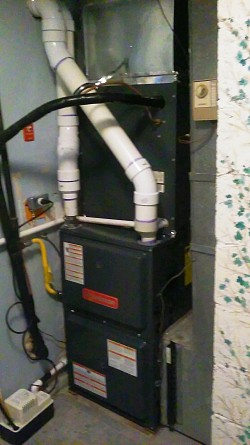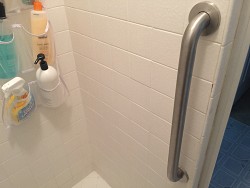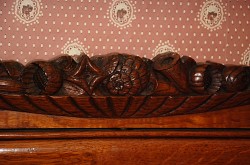Autumn Storm Window Guide
 If the onset of cooler fall weather is reminding you of how much your old windows failed to keep you warm last winter, you might be thinking about adding storm windows before the real cold hits. As with primary windows, it's important to do some research and shop carefully for storm windows, to make sure you get the right type, performance factors and features for your needs. This basic primer on storm windows will help get you started:
If the onset of cooler fall weather is reminding you of how much your old windows failed to keep you warm last winter, you might be thinking about adding storm windows before the real cold hits. As with primary windows, it's important to do some research and shop carefully for storm windows, to make sure you get the right type, performance factors and features for your needs. This basic primer on storm windows will help get you started:
What Storm Windows Do
Storm windows have long been the answer to supplement the thermal performance of older, often single-pane, primary windows. And they do a fairly good job -- some better than others. In essence, a storm window acts as a second window unit to help buffer winds, driving rain and even outdoor noise. The added thermal performance storms offer is largely a result of creating a dead air space between the storm and primary windows.
While some interior-type storms are completely sealed, traditional exterior storms are not, which means the added insulating value of a storm window can be very low. That said, because most storm windows help reduce heat loss through air flow, conduction (heat passing through materials) and radiation (heat passing through light transmission), they are therefore worth consideration. Storms are also much less expensive than new high-performance windows, and offer a viable alternative to primary window replacement when budget and/or aesthetic (or historic preservation) considerations are important.
Exterior Storm Windows
Exterior storms are installed either permanently or temporarily to the outside of a primary window's frame or exterior casing (surrounding trim). The most common type of these are the standard aluminum "triple-track" windows that have two double-hung window sashes and tracks, plus a third track with a screen. These are easy to install and generally are very reliable. Exterior storms are sealed (with caulk, typically) on all sides except the bottom, which allows condensate and water vapor to escape the air space between the window units.
Interior Storm Windows
Because they install on the inside of primary windows, interior storms are popular options for apartment dwellers, homeowners in multistory homes and those who prefer not to see storm windows from their home's exterior. If you own casement or awning-style primary windows that open out, interior storms are your only option. Unlike exterior units, interior storms are more or less air-sealed, so they offer better thermal performance.
Storm Window Materials
Both exterior and interior storms are commonly available with frame materials of aluminum, vinyl, wood or vinyl-clad wood. For the glazing, you can choose from standard glass, laminated or tempered glass (for safety), heavy-duty (or double-strength) glass and a variety of plastics, such as acrylic and polycarbonate. While glass is more breakable than some plastics, plastic windows are much more susceptible to scratching, clouding and damage from long-term sun exposure. As with primary windows, storm windows are now available with low-e (low-emissivity) coatings on the glass, which help trap heat inside to reduce overall heat loss.
What to Look for in a Storm Window
The most important performance rating for storm windows is the air-infiltration rating. This tells you how much air (in cfm, or cubic feet per minute) can pass through the window in a 25-mph wind. High-performing storm windows are in the range of 0.04 cfm (the lower the better). Other features to look for include high quality weatherstripping that seals the entire perimeter of each window sash, a horizontal frame support (or tie bar) for large windows and low-e coating (if applicable for your climate and the window's location).
For standard exterior storm windows, look for heavy-gauge metal (at least 0.05 inch for aluminum), a baked-on finish, stainless steel hardware and an adjustable sill piece for a custom fit to the window sill.
Before You Buy...
If you have relatively new primary windows that are still under warranty, be sure to check with the window manufacturer before buying or installing storm windows. Adding storms could void your windows' warranty. It's also a good idea to ask the manufacturer or your window supplier for recommendations on choosing storms. In some climates, such as those with very high humidity, storm windows can be hard on primaries due to trapped moisture and added heat.
Need a little help installing those storm windows? Hire a reliable handyman near you to do the job.
Updated September 20, 2018.
Looking for a Pro? Call us (866) 441-6648

Average Costs
Related Experiences

Furnace Replacement So Our Heat Won’t Fail In The Winter Cold

I Needed To Install Shower Safety Rails After My Knee Surgery



